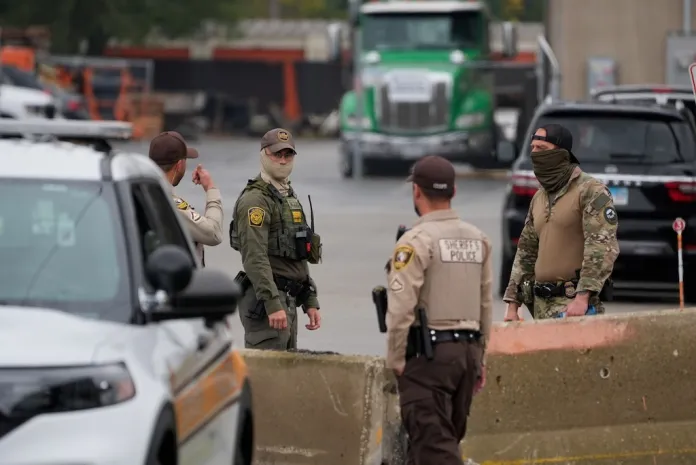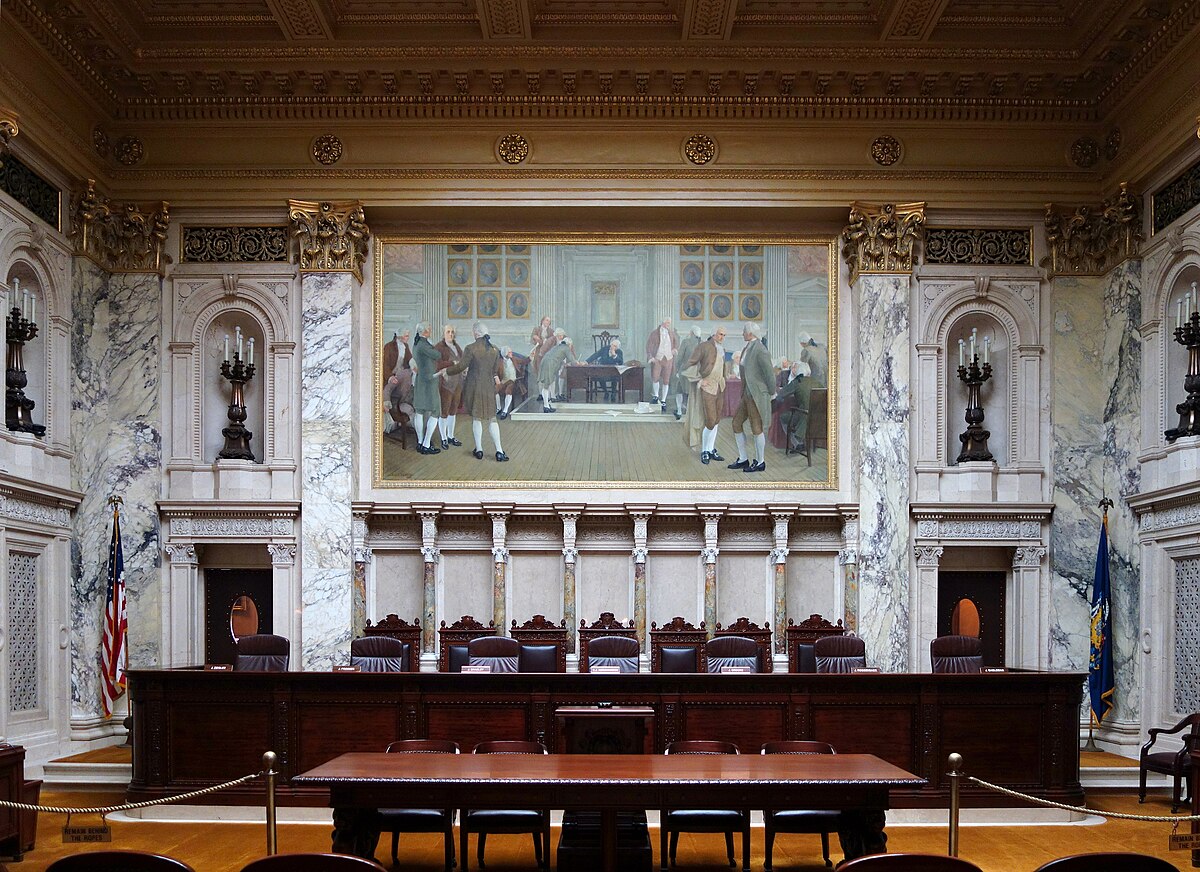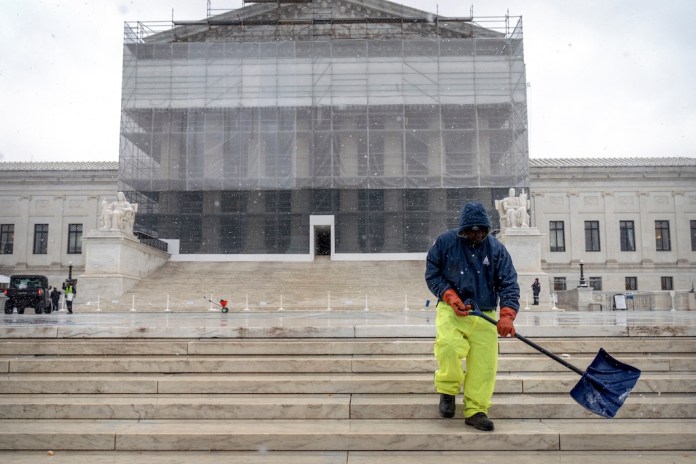Supreme Court will weigh challenge to Biden regulations on ‘ghost guns’ – Washington Examiner
The Supreme Court is preparing to hear a significant case regarding the regulation of ”ghost guns,” which are untraceable firearms that can be assembled from kits sold online. The case, named VanDerStok v. Garland, centers around a 2022 rule from the Bureau of Alcohol, Tobacco, Firearms and Explosives (ATF) that seeks to classify ghost gun kits and components as firearms. This regulation would subject these kits to the same requirements as traditional guns, including serial numbers and background checks.
The ATF argues that ghost guns present a rising public safety threat, as their components can be easily and anonymously converted into functioning firearms, which are increasingly found at crime scenes. Data shows a significant increase in ghost guns recovered by law enforcement, highlighting the urgency of the issue.
A federal district court in Texas previously blocked the implementation of this ATF rule, claiming the agency overstepped its authority. However, the Supreme Court temporarily reinstated the regulation as the case unfolds. Advocates for the rule, including the ATF, emphasize its necessity for public safety, while opponents, comprising gun owners and pro-Second Amendment groups, argue that it infringes on individual rights and exceeds the ATF’s regulatory powers.
The dispute reflects broader ongoing debates about gun control and individual rights in the U.S., particularly under the current Supreme Court’s interpretations of the Second Amendment, following significant rulings that have favored gun rights in recent years. The outcome of this case could have meaningful implications for the regulation of firearms and the legal definition of what constitutes a firearm.
Supreme Court will weigh challenge to Biden regulations on ‘ghost guns’
The Supreme Court is set to hear a major case on Tuesday regarding the regulation of “ghost guns,” which are defined as untraceable firearms that can be assembled from kits sold online.
In one of their first cases of the term, the nine justices are slated to weigh a 2022 rule issued by the Bureau of Alcohol, Tobacco, Firearms, and Explosives that aims to treat ghost gun kits and gun parts like other firearms. The so-called “Frame or Receiver” rule makes the parts and kits subject to serial number requirements, background checks, and other regulations under the Gun Control Act of 1968.
The ATF defends the rule as necessary to combat the threat of ghost guns, which are being used in a growing number of crimes across the nation. Ghost guns, according to the ATF, pose an urgent public safety threat because they involve components that can be “readily converted into a working firearm” and can be done so anonymously, bypassing traditional gun control measures such as background checks.
Oral arguments in the case, VanDerStok v. Garland, come as law enforcement data shows a significant rise in ghost guns recovered from crime scenes in recent years, going from fewer than 4,000 in 2018 to nearly 20,000 recovered at crime scenes in 2021, according to Justice Department data.
In 2023, a federal district court in Texas blocked the enforcement of the rule, agreeing with challengers that the ATF exceeded its regulatory authority. However, the Supreme Court temporarily reinstated the rule by a narrow 5-4 ruling while the case proceeded through the courts. Now, the justices will determine whether the ATF’s rule can stand and if the definition of a “firearm” should include ghost gun kits.
During the second year of President Joe Biden‘s term in office, he held a major press conference during which he demonstrated the ease with which the ghost gun components can be assembled into a working firearm.
“If you order a package like this one over here … you bought a gun,” Biden said in April 2022. “It’s not hard to put together [using] a little hand drill at home,” he added, saying felons and terrorists could use the kits to commit mass atrocities.
Opponents of the ATF ghost gun regulation, including gun owners, pro-Second Amendment groups, and manufacturers, argue that the ATF’s rule oversteps the bureau’s authority by extending the definition of firearms to include gun kits and partially completed frames or receivers.
“I believe I’m very much representative of the average American patriot,” said Jennifer VanDerStok, the namesake of the case. “We really just want to be left alone and are happy to be law-abiding, so long as those laws don’t violate the Constitution.”
Plaintiffs, including VanDerStok and Michael Andren, are gun builders and enthusiasts.
Although the firearms industry would stand to benefit from a favorable decision in the case, VanDerStok said in a published interview with a supportive litigation group last month that the case is centered on upholding the rights of individual gun builders.
“Yes, manufacturers whose businesses would be hurt by the frame and receiver ban have joined the suit, but it’s primarily a case brought by — and for — ordinary Americans who want to be able to make their own firearms without government interference,” VanDerStok said.
The dispute also comes during a particularly notable era in Chief Justice John Roberts’s court, which saw a series of rulings broadly upholding the rights of law-abiding gun owners. In 2022, Justice Clarence Thomas wrote the 6-3 Bruen v. New York Rifle & Pistol Assn. decision that found gun control measures must conform to the nation’s “history and tradition” of firearms laws, causing courts across the nation to weigh the Bruen precedent when considering a variety of laws dealing with gun access.
This past term, the Supreme Court clarified the scope of Bruen in a case that turned down an effort by a criminal defendant to invalidate a statute that blocks people under domestic violence restraining orders from obtaining a gun. But in a more related dispute to the one at issue on Tuesday, the high court also ruled in favor of Texas-based gun owner Michael Cargill, who successfully challenged the ATF’s Trump-era bump stock ban in Cargill v. Garland.
But while Cargill saw a recent victory at the Supreme Court over an ATF regulation, some legal experts who have worked closely on cases against agency overreach are less optimistic that the Court will side with gun owners on this dispute.
“The ATF regulation might be a little more defensible,” one attorney who requested anonymity told the Washington Examiner. He said the key question before the justices might involve the ATF’s use of the word “readily,” referring to how the government agency describes these parts as “readily convertible.”
“You know these parts are being converted into a firearm. So are they ‘readily’ converted or more ‘attenuated,’ is the question,” the attorney said, adding it was more of a “grey area” in the language compared to Cargill’s case.
However, if the justices rule against the ATF in VanDerStok, the outcome could have broad implications for gun regulation and the power of federal agencies.
The eventual ruling will affect not only ghost guns but also how future ATF regulations are interpreted under federal law, especially in the wake of major setbacks to agency authority due to the overturning of the Chevron doctrine this past June. Because of that case, a larger onus falls on agencies to show federal statutes passed by Congress align with new regulations put forth by government bureaucrats.
Oral arguments will commence at 10 a.m. Tuesday and are live-streamed to the high court’s webpage. A decision in the case is expected later this term, before the end of June.
" Conservative News Daily does not always share or support the views and opinions expressed here; they are just those of the writer."




